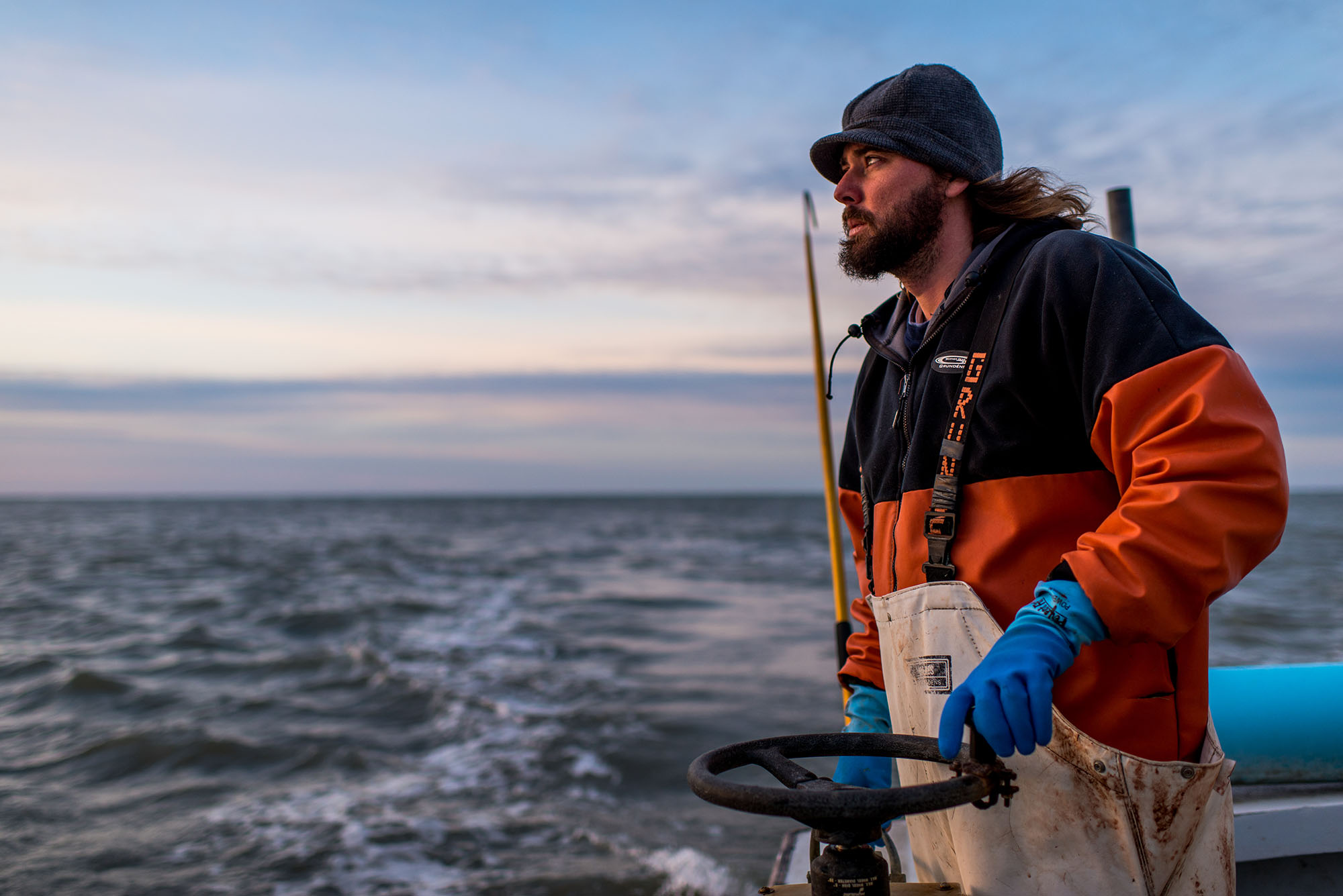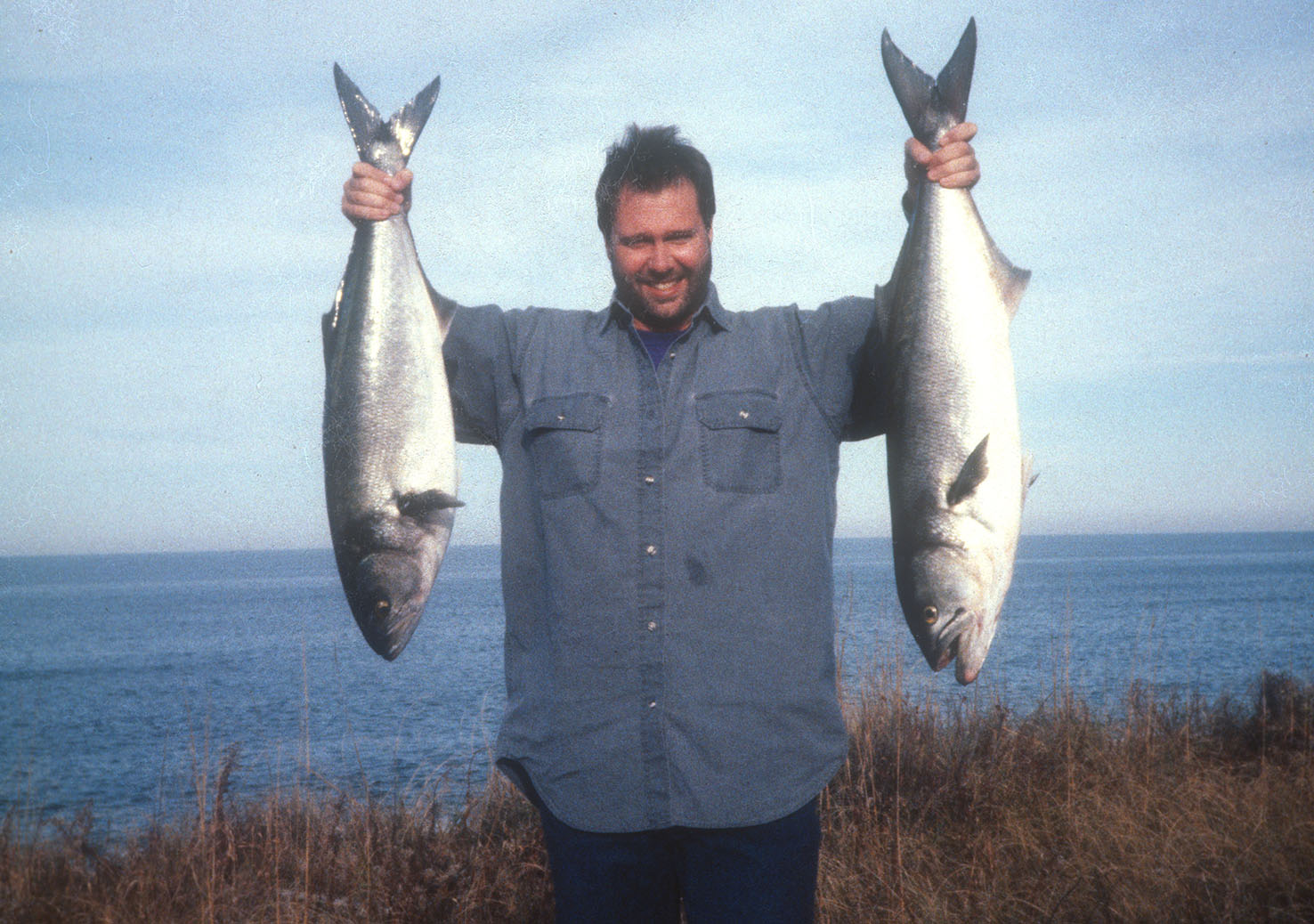Photos by Daniel Pullen
Susan West is a journalist and co-investigator of the Next Generation Coastal Communities project. Daniel Pullen’s photos come from his N.C. Independent Waterman Project.
Young people who hitched their future to the North Carolina commercial fishing industry in the 1970s and 1980s followed a clear path. After learning the trade under the tutelage of an experienced captain, they struck out on their own with a modest boat and a small investment in fishing gear.
These new captains were confident about their future, buoyed by the 1976 passage of the Magnuson-Stevens Act — the primary law governing marine fisheries management in U.S. federal waters — and national interest in expanding the country’s fishing economy.
Many fishermen of that generation continue to work in the industry. But these days, fewer young people are setting their sights on a fishing career. Those familiar with the situation describe it as the “graying of the fleet.”

Scott Baker, a fisheries specialist with North Carolina Sea Grant, took a look at the state’s statistics and found that fishermen ages 51 to 65 accounted for 35 percent of all licensed commercial fishermen in North Carolina in 2016 and landed nearly 39 percent of the commercial catch.
Fishermen ages 19 to 34 made up just 15 percent of licensed fishermen and landed only 12 percent of the catch. The N.C. Division of Marine Fisheries (or DMF) data also showed that licensed fishermen age 65 and over outnumber fishermen in the 19 to 34 age group.
“While these numbers only represent the most recent snapshot in time, the stats should trigger concern within the industry,” Baker says. “The numbers confirm what many in the industry have known for a while: Few young people seem to be getting into commercial fishing.”
In socioeconomic surveys, DMF found that the average age of commercial fishermen working in Pamlico Sound in 2014 was 54 years. In Albemarle Sound, it was 52 years.
These demographic data aren’t unique to North Carolina. For instance, Alaska Sea Grant reports that the average age of a commercial fisherman in that state in 2014 was 50 years. The Gulf of Maine Research Institute found that the same held true for New England lobstermen.
Facing Rough Waters
Young people starting out in the industry today must navigate a number of potential hurdles unimaginable to their cohorts in the 1970s and 1980s.
“We’ve always been good at adapting and rolling with the punches, but it’s a whole new ball of wax these days,” a fisherman in his 60s said in a confidential interview, part of a North Carolina Sea Grant-funded project titled Next Generation Coastal Communities.
Until the 1990s, licenses for most commercial fisheries were inexpensive and readily available for purchase for a nominal fee from regulatory agencies. As limited entry programs and permit moratoriums were implemented, however, entry-level participation became more expensive.
For example, South Atlantic snapper-grouper permits for sale on the open market currently start at about $40,000. Anyone wanting to enter the fishery must buy two permits in order to qualify for one newly issued permit. A license endorsement allowing the use of black sea bass pots can cost almost $50,000. Federal permits for sea scallops sell for well over $1 million.
“I worry about the future of small places and small, independent fishing operations, like the ones in my village. The thrust of fisheries management seems to favor large corporations with deep pockets,” one North Carolina fisherman said.
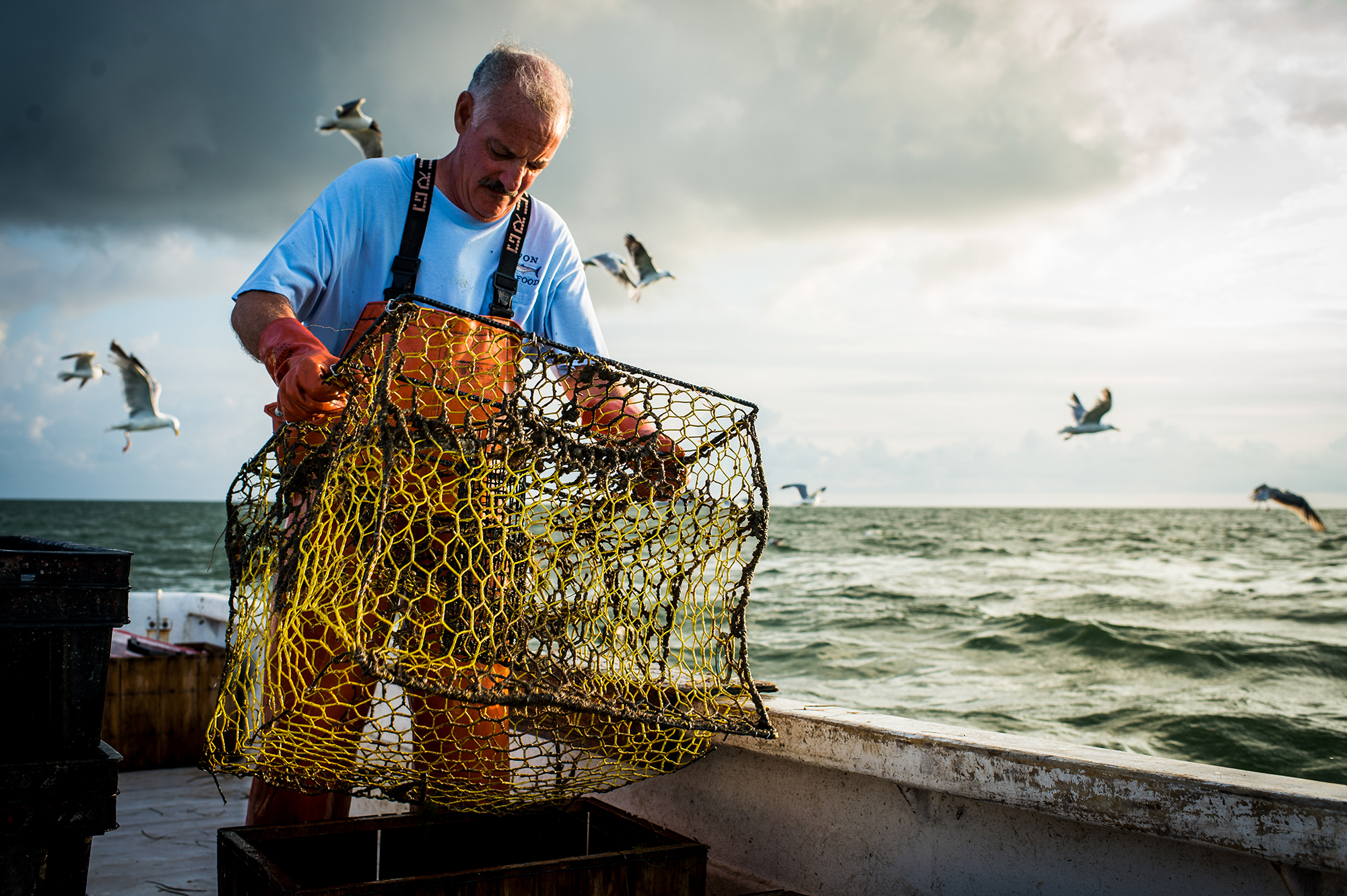
Equipment and operating costs also are increasing. For instance, North Carolina fishermen report that each new crab pot costs $48, while a 40-pound flat of menhaden — the bait of choice for most crabbers — runs around $26. Those expenses have more than doubled since the 1990s.
Meanwhile, diesel fuel prices that ran below $1.30 per gallon through the 1990s spiked to $4 per gallon during the past 10 years.
Global competition in the seafood marketplace can drive down prices paid to domestic fishermen. Imported seafood is often cheaper because of less stringent environmental, labor and food safety regulations in producing countries.
The National Oceanic and Atmospheric Administration’s 2016 report on fisheries showed that between 85 and 95 percent of the seafood consumed in the United States is imported, though that percentage also includes seafood caught in this country, exported to other countries for processing, and then shipped back.
Other deterrents to building a successful fishing business include uncertainty over the potential impacts of warming water temperatures and other environmental changes on fish migration behavior and abundance. An increasingly complex regulatory environment also poses a challenge to business planning and investment.
“Regulatory uncertainty serves as a disincentive for young people to invest in the fishing business. Look around any waterfront and you’ll see fishing gear in good condition that can’t be used now because new regulations have made it illegal,” an older fisherman explained.
Parental and societal pressure on young people to seek careers less dependent on environmental vagaries and regulatory unpredictability also plays an important role in channeling youth away from commercial fishing careers — and away from their communities.
Reading the Room
In 2006, the last fish house on Ocracoke Island was closing. Recognizing its value to the local economy and to village identity, the community forged a plan to save the fish house and develop a program to promote local seafood. Their success still draws visitors, while also providing seafood to the island community and beyond.
How will current and future leaders meet similar challenges? The graying of the fleet affects not only family fishing businesses but also surrounding coastal communities that have traditionally adapted together to environmental, economic and social changes.
The goal of the Sea Grant-funded Next Generation Coastal Communities project is to explore fishing community dynamics and ways to stem the departure of young people from the industry.
David Griffith, the interim director of the Institute for Coastal Science and Policy at East Carolina University, is project director. Barbara Garrity-Blake, a cultural anthropologist on faculty at Duke University Marine Lab, and I are project researchers. Sara Mirabilio, a Sea Grant fisheries specialist, is our leadership development collaborator.
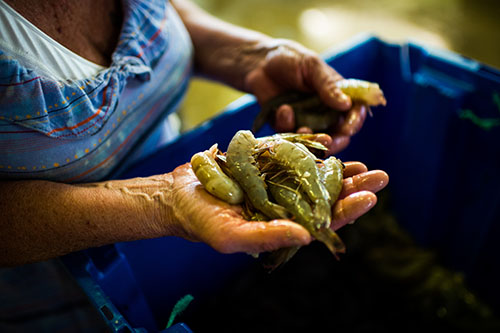
Our research team conducted interviews with local community and commercial fishing leaders in 15 coastal North Carolina communities, stretching from Colington in Dare County to Calabash in Brunswick County.
We wanted to learn what efforts residents are making to support the fishing industry in their region — the who, how, what and where of successful, and not-so-successful, community action. To encourage informants to speak freely, names and other identifying information were coded.
We will complete the final report later this year. Already, one finding is clear: Community leaders reject the idea that the fishing industry is in ruins.
“For more than 20 years, people have told me that the industry is dying, but it’s still here. Granted, it isn’t the same industry we knew in the 1990s, but as long as people want seafood, there will be a fishing industry,” the director of a regional economic development program said.
Our team also found strong support for the role of commercial fishing in sustaining community identity and local economies. “Let’s move away from the idea that all we want is a tourist community,” a town commissioner based in the central coast said.
Local leaders, including some within the industry, say that commercial fishermen need to reach out beyond the docks to build stronger alliances with consumer, tourism and environmental groups that could help educate the public about fishing issues. But many leaders also recognize that outreach and promotion can require skills that run counter to many watermen’s natural disposition.
A Dare County waterman active in promoting the local industry explained,“Commercial fishermen like the solitude of working on the water, but the strengths and independence that come with that can sometimes be a weakness on land dealing with fisheries politics and other issues.”
A mix of community leaders also identified fishermen’s weather-dependent and irregular schedules as a hurdle to their outreach and advocacy. However, fishing leaders in their 60s said that challenge isn’t new — they have sacrificed fishing days and income to attend policy meetings.
Pressed to explain why their generation committed to advocacy work early on, older fishermen said their early experiences showed that their participation could make a difference in the outcome of regulatory decisions, particularly with respect to federal regulations designed to protect marine mammals.
Several interviewees weighed in on the current role of social media in discussing policy issues facing fishermen. Most echoed the opinion of a Hatteras Island community advocate who cautioned that sharing on social media doesn’t replace participation at formal regulatory meetings and hearings.
Leaders also stressed the value of ongoing communication with elected officials. They emphasized that fishermen should offer solutions when discussing their various challenges with policymakers.
Local elected officials agreed. “We often don’t have a pulse on all the issues impacting fishermen. Many times, we only hear information after fishermen have been battling an issue for months,” a town mayor said.
Several community leaders also commented that during policy discussions, fishermen sometimes make the wrong case to the wrong audience. “The heritage angle is important in cultural education but is not the right argument to use in fisheries policy discussions with regulators or elected officials,”a community advocate said. In such cases, fishermen should instead share information about the environmental or economic impacts of a given policy, the advocate suggested.
The interviews revealed that many older fishing leaders are ready to pass the baton to younger men and women in the industry.
“In the past, my village had lots of participation in fisheries politics, especially for a small place with a small fleet. I’d like to step back from serving on federal committees but haven’t found younger fishermen interested in replacing me. So, I haven’t resigned because I don’t want the North Carolina commercial fishery to go unrepresented,” said a fishermanin his 60s.
Social Networking
Our research team conducted a second round of interviews that revealed what “social capital” in fishing communities looks like. We defined social capital as a network of relationships made up of people who can be counted on to help accomplish shared goals for the good of communities. We asked interviewees to identify individuals who play key roles in these networks.
“If you think of social capital as the relationships we rely on, fishing communities are no stranger to this concept,” project researcher Garrity-Blake explains.
“In fact, I’d say part of the reason fishermen have stayed afloat in difficult times is due to a strong support network in their community, whether family, church, the fish house, or their fishermen peers. But there’s important value in strengthening ties beyond immediate communities to regional leaders, policymakers, scientists, local foods advocates and other information sources,” she says.
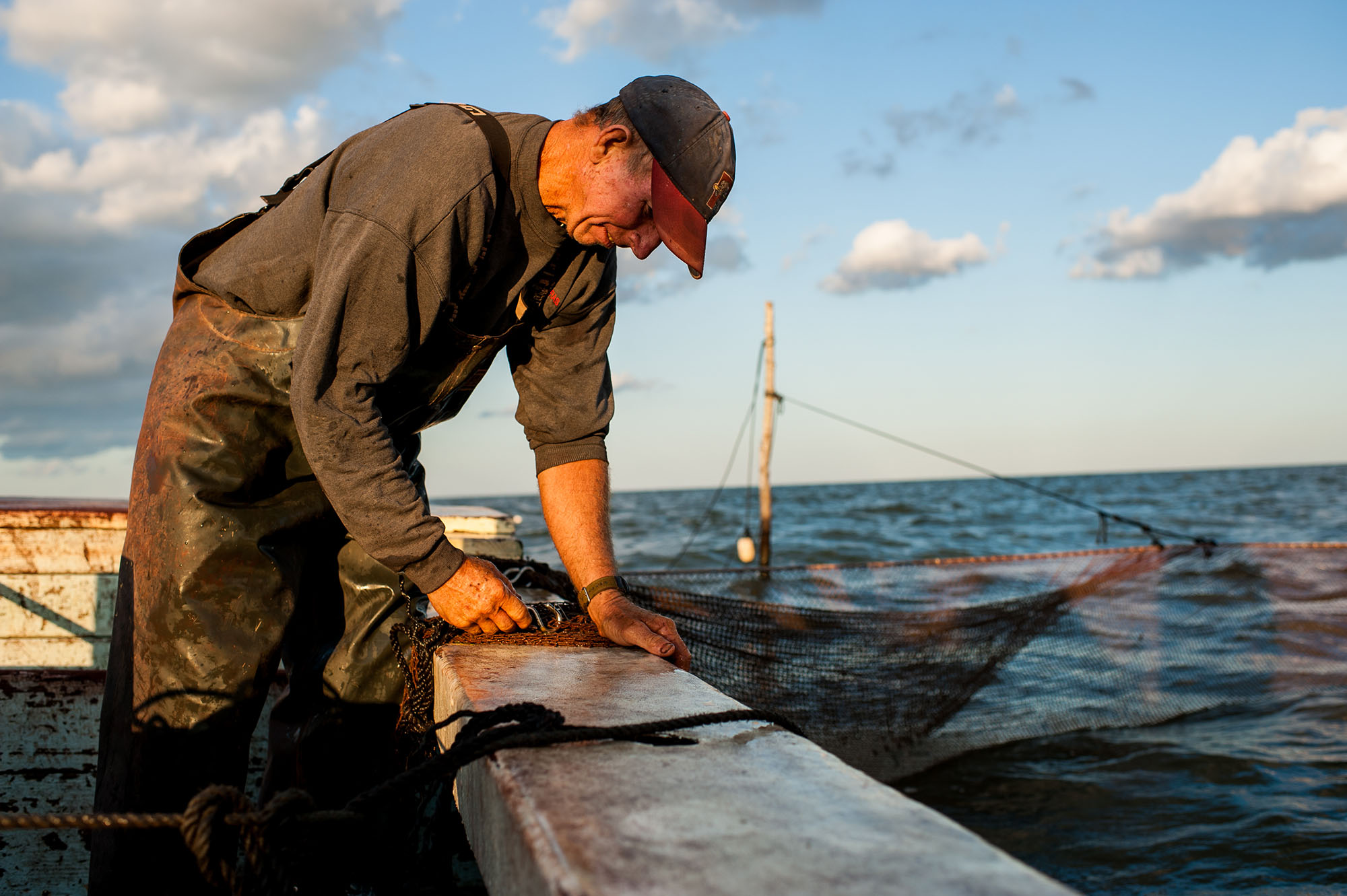
We learned that in many communities, fishermen rely on information from one or two “connectors” within the industry who have developed robust and diversified personal communication networks. We also found that some communities have much more limited networks than others, often resulting in less agile community leadership and action.
One connector with an expansive social capital network that stretches from school classrooms to the halls of Congress told us that he was willing to talk to anyone about fishing issues, including outspoken proponents of management solutions that he disagreed with.
Another connector stressed that his communication network helped him predict future hot-button issues. “Being proactive and involved is key. Reaction will kill you quicker than anything,” he explained.
Many fishing leaders built vibrant social capital networks only after jumping headfirst into the policymaking arena — for instance, when a regulatory action on the verge of approval would severely impact their business. “Sometimes a particular spark lights the fire,”remarked one waterman in his 50s.
For some leaders, initial ventures into fisheries politics often were unsuccessful. But by getting involved, they learned the value of understanding the regulatory process, along with the background behind an issue and how various points of view are represented in discussions.
Building Skills
The third component of the Next Generation project consisted of Fish Camp, a series of networking and skill-building workshops for younger commercial fishermen, patterned in part on programs in Alaska and Maine.
Alaska Sea Grant hosts a biennial summit to help young fishermen network and explore innovative ways to strengthen their businesses and help curb the graying of the fleet in the state.

North Carolina Sea Grant fisheries specialist Mirabilio attended the Alaska event last year. “The young fishers in attendance were seeking guidance on the business of fishing, beyond more obvious foci on seafood markets, the regulatory process and the science impacting fisheries management,” she says. “Several of the teaching methods were very novel, with a strong emphasis on communication skills.”
For its part, the Maine Center for Coastal Fisheries runs a leadership program called the Community Fisheries Action Roundtable, which prepares fishermen for collaboration with scientists and regulators in the co-management of fisheries.
Building relationships with scientists appeals to North Carolina fishermen as well. Fish Camp participants expressed “strong interest in working with scientists to help gather data and solve environmental problems,” Garrity-Blake says.
Fish Camp discussions also revealed that young commercial fishing leaders are keenly aware of the inherent risks in fishing for a living but are confident that they can scale their operations to meet environmental, regulatory and economic challenges.
Griffith and the Next Generation team anticipate that the new wave of fishing leaders will be central to efforts to strengthen the social capital links that help sustain coastal communities.
For example, Fish Camp attendees “showed us how much talent for leadership exists among young commercial fishing captains and crew,” Griffith notes. “We are beginning to understand their potential for initiating lasting change in an industry vital to North Carolina’s coastal communities.”
For more on Fish Camp, read “Welcome to Fish Camp,” by Sara Mirabilio.
- Categories:
